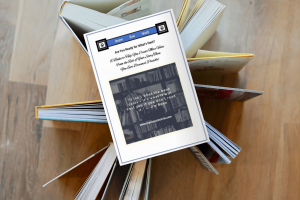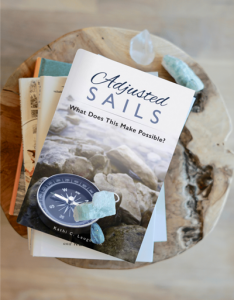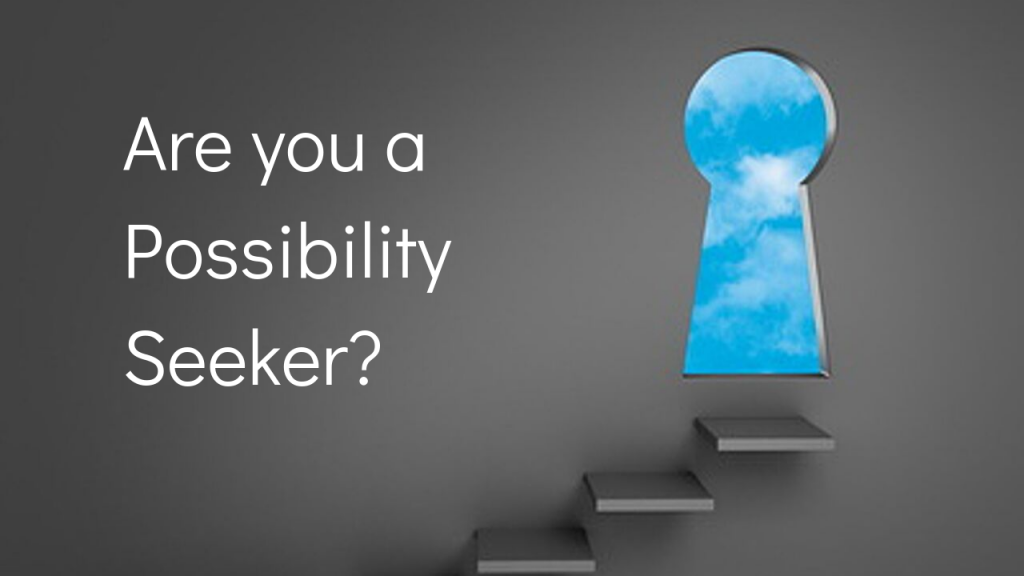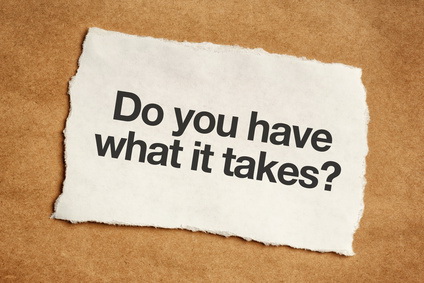 It’s a question that in some form we often ask.
It’s a question that in some form we often ask.
What will it take to do something, have something, be something?
What will it take to have more of something, less of something or be done with it altogether?
What will it take? Do I have it?
When I stopped to really consider where I have succeeded in attaining a goal and where it has alluded me, I found that there were five things that have made a significant difference. A few of them surprised me but as they say, success leaves clues and these have proven themselves by their presence many times over. It is less about what it takes in terms of what we do, and more of what it takes for who we need to be.
#1 – Be comfortable being a beginner
Quite often when we have already achieved success in some area of our life we tend to get comfortable being in that “attainment” mode. But that holds us back. To move on to what is next, we must be willing to once again be that beginner. What does that mean? It means recognizing there is still so much to take in. It means staying curious. It means recognizing that to be valued as a teacher, we must continuously seek deeper value as a student.
#2 – Embrace being yourself
It is quite possible, perhaps even advisable to follow a prescribed path to get somewhere. But it would be invalid to think that it would be the only way to get there. The path we choose is just that, a choice. There is only one way to fully embrace our individuality and value and that is by taking responsibility for ourselves and determining the value we want to create. Those that go far beyond success and attain significance in their impact and influence are those that take responsibility for their part of the story. We must first embrace ourselves before we can truly embrace the world and influence others. What determines if you have what it takes? It isn’t a what, it’s a who. And the who is you.
#3- Relish making a choice
Those able to continuously move into their best place for success have this as a distinctive part of their modus operandi. They choose. And they choose timely. Because no choice is still a choice. Not saying yes is the equivalent of no. Indecision is indeed a myth.
The most critical insight for me was recognizing that how we handle the seemingly small choices in life is the best predictor of how we will manage the more significant opportunities. If we aren’t making good choices within our day, ultimately that shows up as ineffective choices for our lives.
#4- Crave mastery
Competition is not something that drives me. In fact, I tend to reject any situations that have a highly competitive energy. It just doesn’t resonate with me. But I am highly driven. Gaining an understanding of that distinction was invaluable for me. What drives me? Mastering my craft. Learning something well and finding even greater depths and capacity within myself. Good can be the enemy of great when greatness is the real goal. Regardless of what we choose as our form of measurement, the desired result is the same: Mastery – Being the absolute best we can be.
#5- Live from a place of gratitude
This has been the most significant constant throughout the best experiences in my life. Gratitude is not just being appreciative of what someone does for us. Gratitude is a recognition of everything that has made good possible. It is a constant seeking of the good in order to show our appreciation for it, celebrate it. In his program MindHack, David Bayer teaches that gratitude in its basic form is energy. That was such a profound image to soak in. Living from a state of gratitude, a state of grace is living from the purest form of energy available to us.
Imagine these thoughts as a mantra, a manifesto for your life. That’s what I’m working toward in mine just now. Since our true legacy will be determined by how we live rather than what we leave, I am seeking qualities that are worthy.
It’s interesting to me as well that the same things that are true for ourselves as individuals for making a difference are also true as a foundation for bringing together those that we lead.
Imagine a group that is committed to constant curiosity and growth, willing to stake their uniqueness in the world, take the risks that will propel them into greatness, do the work that will sustain that position and ultimately celebrate everything and everyone that made it all possible.
My bet would be that they would indeed have what it takes.






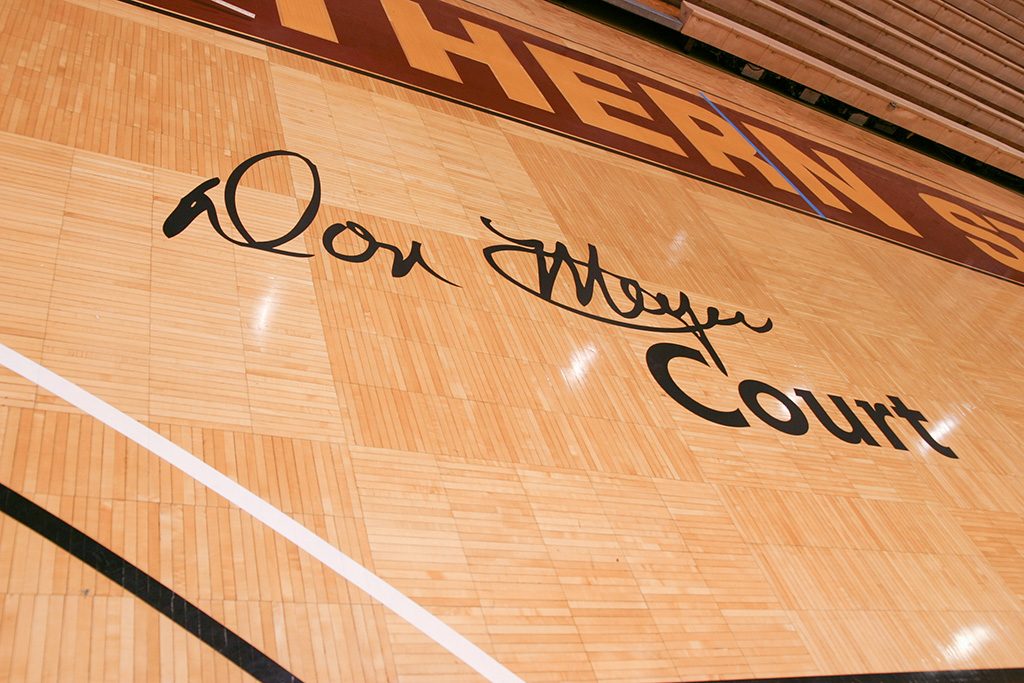 At a recent conference, one of the keynote speakers shared lessons he learned from Coach Don Meyer, a much loved and respected college basketball coach who left an indelible mark on everyone that knew him.
At a recent conference, one of the keynote speakers shared lessons he learned from Coach Don Meyer, a much loved and respected college basketball coach who left an indelible mark on everyone that knew him.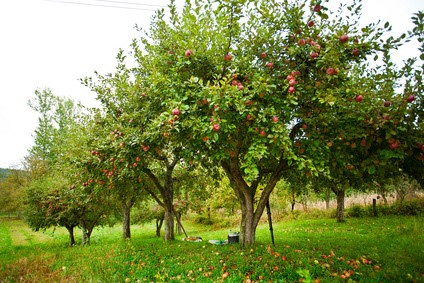
 2016 is nearly behind us. Has it flown by for you? It seems as though it was just a blink ago that I was sharing last year’s holiday season with my daughter and her family in Oklahoma. Soon I will be traveling again for an early Christmas celebration with them.
2016 is nearly behind us. Has it flown by for you? It seems as though it was just a blink ago that I was sharing last year’s holiday season with my daughter and her family in Oklahoma. Soon I will be traveling again for an early Christmas celebration with them.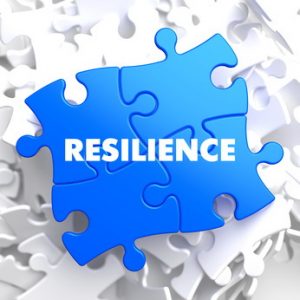 It’s easy to say that we are resilient. It’s much more challenging to live resiliently. It is one of the most important skills we need to develop. But all too often we wait until we need it to determine if we’ve got it. The reality is that it doesn’t work that way.
It’s easy to say that we are resilient. It’s much more challenging to live resiliently. It is one of the most important skills we need to develop. But all too often we wait until we need it to determine if we’ve got it. The reality is that it doesn’t work that way.